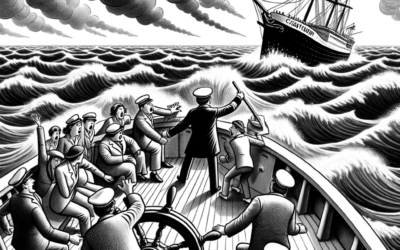This article originally appeared in Training Magazine
When the Dow Jones industrial average goes from over 14,000 to under 7,000 in roughly a year’s time, not much is certain. Will your chief supplier survive the credit crunch? Will customers return to their old spending habits or continue to conserve? Is another industry primed for a crash?
Our government has shown far-reaching power—rescuing companies it deemed too big to fail and letting others succumb to market forces. Will the government become your competition or might it come to your aid?
With many barriers to entry removed—due to easy access to information (much of it free), endless outsourcing options, and discounted equipment and retail/office space—will a new player enter the market and disrupt your entire business overnight? Or will new technology make your bestselling product obsolete?
The present and future is uncertain, and even the past might have to be revisited. What appeared to be a solid company partnership might turn out to be nothing more than an elaborate ponzi scheme. The numbers in your books may be grossly overinflated, depending on whom and what you’ve trusted.
Thankfully, change is familiar territory for trainers. You’ve helped others change since you began in this field. You’re accustomed to how difficult, overwhelming, and frightening it can be for clients to change.
In the past, you’ve likely relied on predictive models to illustrate what changes your clients can expect and prepare for. With such an unpredictable future, you can’t rely on these models as much. What is needed now is resilience, adaptability, and trust—in greater quantities than ever.
A crisis reveals the trustworthy, not just the frauds and swindlers. Your clients have probably scrutinized their team members, since very few industries have avoided layoffs. They have kept the core intact—the ones they can and ought to trust.
And yet many leaders trust only themselves. They take as few risks as possible, since the stakes have risen. They make more decisions, not less, despite the dangers of centralizing power evidenced in the financial and auto industries, and elsewhere, by too little questioning of methods and reasoning.
Now is the time for leaders to trust their team members. Extending trust to co-workers makes them more likely to be engaged, which leads to fewer oversights and more organizational commitment. It results in better vision.
To convey trust properly, leaders must operate from a place of “not knowing.” If their co-workers are asked for their input only out of a sense of obligation, the responses will “validate” the leader’s expectations. These co-workers will try to guess the leader’s opinion, since that is what the leader wants to hear.
Leaders are accustomed to being go-to people and supplying answers; that’s how they moved up to their leadership positions, in most cases. Asking questions and trusting others to handle complex issues doesn’t come as easily. They struggle sometimes to ask good, open-ended questions that inspire and engage others.
It’s helpful for leaders to hear they can’t and shouldn’t be expected to keep up with the nuances of everyone of their team members’ jobs or with the flood of business-related information. They need instead to hone their question-asking skills and pass decision-making as far down the organizational hierarchy as possible.
Often it’s the people lowest on the organizational hierarchy who are the first to detect changes that might profoundly affect the business. If they feel empowered to make decisions and are confident their voices are heard by their leaders, the organization may avert potential crises. With leaders on all levels, the organization becomes far more flexible and resilient.
In the past, leaders worked to gain their co-workers’ trust by making bold and accurate decisions and carrying organizations on their backs. Now, leaders must trust others, since one back isn’t nearly enough.
If leaders aren’t curious about what they might learn from others, change will catch them by surprise. Encourage your clients to grow comfortable with not knowing. Then watch as their co-workers’ curiosity and engagement take root, and the future becomes far more certain.


